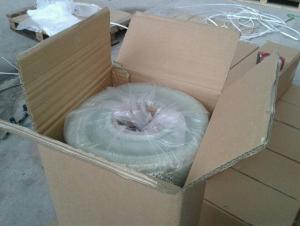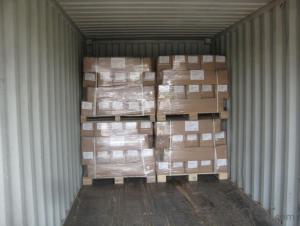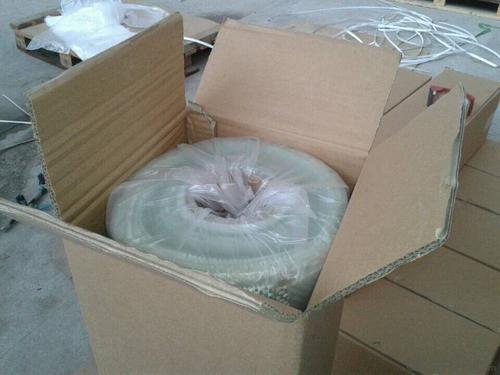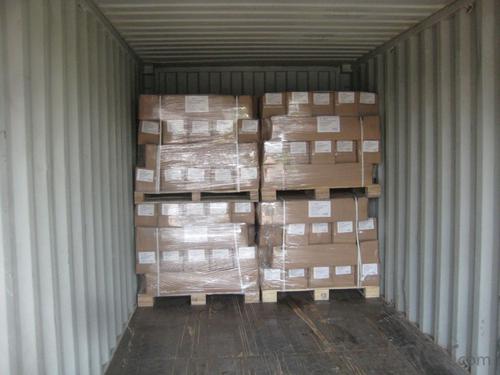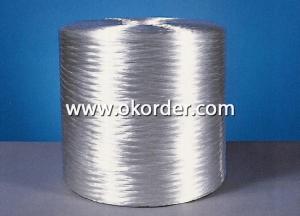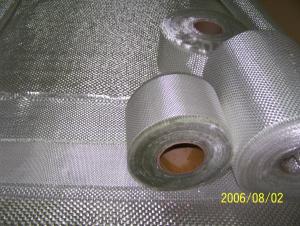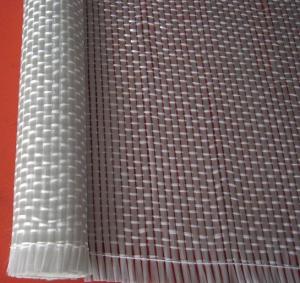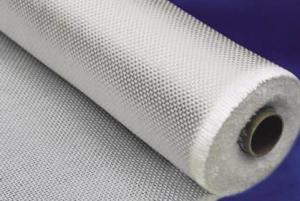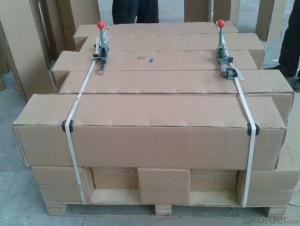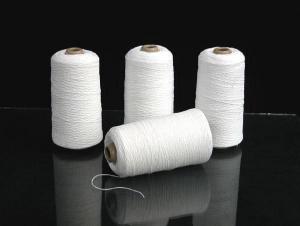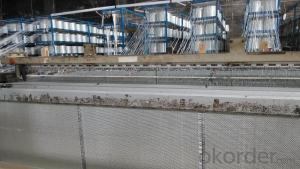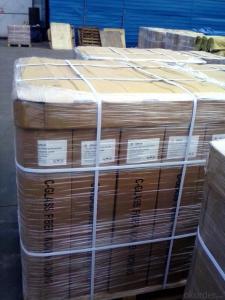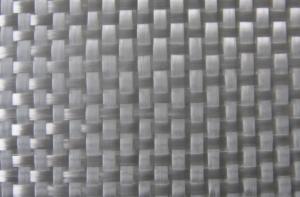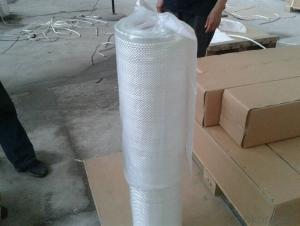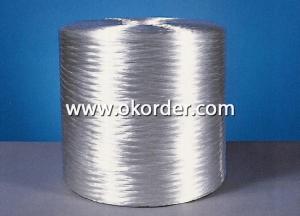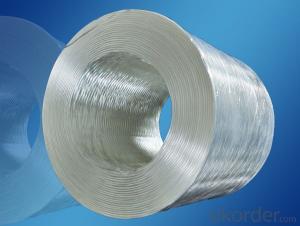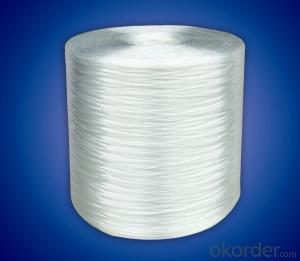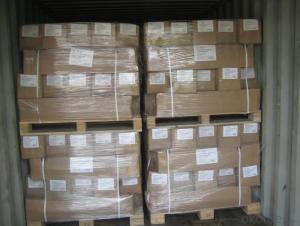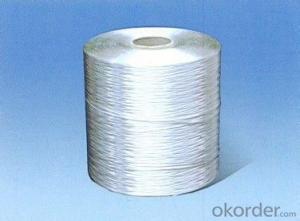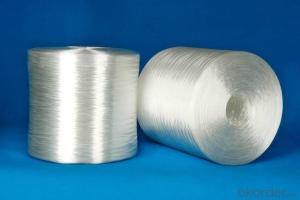Owens Corning Fiberglass Roving C Glass Woven Roving 600gsm for FRP Application
- Loading Port:
- China Main Port
- Payment Terms:
- TT or LC
- Min Order Qty:
- 17600 kg
- Supply Capability:
- 17600kg Per Month kg/month
OKorder Service Pledge
OKorder Financial Service
You Might Also Like
Product Description
1. C glass roving 600gsm are bidirectional fabric made by direct rovings in plain weave pattern.
2. Compatible with unsaturated polyester,vinylresin ,epoxy resin.
Characteristics
1. Consistent thickness and excellent surface treatment.
2.Uniform tension,high dimensional stability and making handing easy.
Technical Data Sheet
TEST ITEM | STANDARD | STANDARD VALUE | AVERAGE VALUE | RESULT | ||
AREA WEIGHT (G/M2) | GB/T 9914.3-2001 | 600+/-48 | 609 | yes | ||
COEFFICIENT OF AREA WEIGHT VARIATION (%) | GB/T 9914.3-2001 | ≤6 | 2.89 | yes | ||
WIDTH (MM) | GB/T 4669-1995 | 1000±20MM | 1000 | YES | ||
FABRICS COUNT (ENDS/10CM) | WARP | GB/T 7689.2-2001 | 25±2.5 | 26 | yes | |
WEFT | GB/T 7689.2-2001 | 25±2.5 | 24 | YES | ||
TENSILE STRENGTH(N/50CM) | WARP | GB/T 7689.5-2001 | ≥2750 | 4064 | yes | |
WEFT | GB/T 7689.5-2001 | ≥2650 | 4208 | YES | ||
moisture CONTENT (%) | GB/T 9914.1-2001 | <=0.30 | 0.27 | yes | ||
LOSS ON IGNITION (%) | GB/T 9914.2-2001 | 0.4-0.8 | 0.5 | yes | ||
FAQ
Package and Storage:Eech roll is packed by polyester bag,and then put into a cardboard box or plastic wowen bag.Optimum storage conditions are between the temperature of 5~35℃ and with the humidity between 35%~65%.The product should be used within 12 months from the time of delivery and remain in theiroriginal packaging until just prior to use.
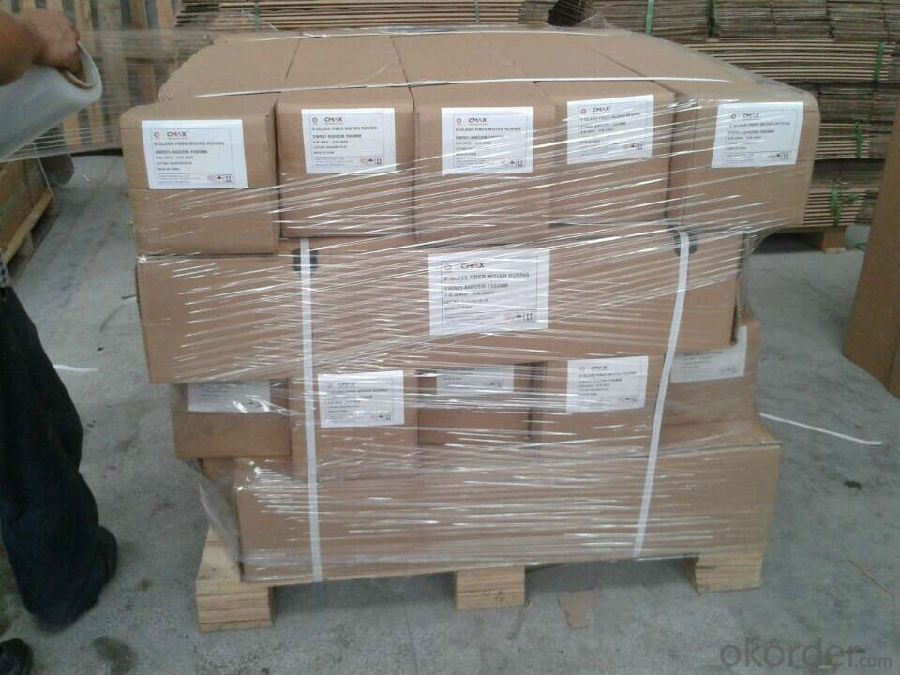
- Q: What is the function of adding fiber material to concrete ?
- In projects, some fiber materials such as paper, hemp fiber and straw are added to concrete. If plastering mortar is added into mixer, it can play the role of skeleton, improve the crack resistance and tensile strength of the plaster layer and enhance the flexibility of floated coat and durability in order to reduce floated coat contraction and make it not easy to fall. The characteristics of the fiber material will be introduced as follows: firstly, paper reinforcement includes dry and wet paper. Dry paper is use at the time of adding quick lime, It was tore up, was removed dust and soaked with water, and then 100 kg lime and 2.75 kg paper are mixed. When using, it should be made into powder by a small steel mill and 3 mm aperture sieve filter. When wet paper reinforcement (commonly known as pulp) was used, each 100 kg lime should be added into 2.9 kg wet paper reinforcement. Specific operation method is the same as that of dry paper. Secondly, the use of hemp fiber requires tenacity and purities. To make is loose, it need to be dried, linen and then it is cut into 20 mm to 30 mm. Each 100kg lime adds 1kg loose hemp which is hemp fiber grey. Thirdly, grass stalks are usually cut into rice straw or wheat straw which is no more than 30 mm long. It could be used after half a month after soaked in lime water. It also can be used as paper after soaked in lime or caustic soda. Fourthly, synthetic fiber mainly includes polypropylene fiber and nylon fiber used for mortar. When using, you should pay attention to its disparity and alkali resistance. These are the all material fiber used in concrete. You should be familiar with the characteristics of the material in order to make better use of it.
- Q: What's the difference between g;ass reinforeced plastics and ordinary glass?
- Yes, P is a glass steel! The difference is that there are some differences between the materials of the antenna structure and the common vertical antenna, but the principle is the same.
- Q: The safe operation of glass fiber twisting frame
- The operator is responsible for hook wrap, decollation, changing roving and cleaning. Doffer is responsible for cleaning. Both of them needs skills.
- Q: What are the causes and methods of glass fiber surface treatment?
- Heat - chemical treatment: first, the glass fiber textile products will be emulsified by paraffin wax and then be treated with surface treatment agent (mainly used for twisting textiles).
- Q: Model parameters of glass fiber reinforced plastic and glass fiber cloth
- The materials for strengthen are Medium, vinyl type and flame retardant, vinyl resin. There are many types of materials like phthalate, benzene, alkali free glass fiber roving, knitted mat etc.: polyester resin
- Q: Does centrifugal glass wool is made from glass fiber
- No, the eliminated one in the upper floor does not appear in ten years.
- Q: The manufacturing technique and process of glass fiber
- What is the thickness of chemical industry glass fiber winding pipe and chemical industry standard deviation?
- Q: The difference among organic glass, glass steel and acrylic.
- It is composed of methyl methacrylate monomer (MMA) polymerization, having the same life of the building. After a special process, the two kinds of composite organic glass acrylic (acrylic) can be compound, with the English name Acrylic. The extrusion can better control the thickness of the plate.
- Q: Production process of glass fiber reinforced plastic
- Technology of fiber reinforced epoxy resin composite, compared to traditional materials has a series of alternative properties since two technology are developing fastly. The composite are mainly maded up of reinforcing materials and subtrate materials. Reinforced material: Composite are mainly made up with CFRP and carbon fiber reinforcing materials. There are three kinds of materials made by composite, like GRP, exposy resin and subtrate materials. In this paper, epoxy resin composites use epoxy resin matrix, with the low curing shrinkage rate only 1%-3% and high saturated polyester resin, as high as 7%-8% and good adhesion; B phase is benefit to the production process; low curing volatile low curing stress; the performance of chemical resistance, good electrical insulation performance value ring oxygen resin solvent, alkali resistant machine performance compared with full power and phenolic acid polyester fat good; curing as a brittle, poor toughness 2 epoxy glass steel (ASTM) FW (fiber) epoxy resin and its products with steel manufacturing glass fiber enhanced
Send your message to us
Owens Corning Fiberglass Roving C Glass Woven Roving 600gsm for FRP Application
- Loading Port:
- China Main Port
- Payment Terms:
- TT or LC
- Min Order Qty:
- 17600 kg
- Supply Capability:
- 17600kg Per Month kg/month
OKorder Service Pledge
OKorder Financial Service
Similar products
Hot products
Hot Searches
Related keywords
